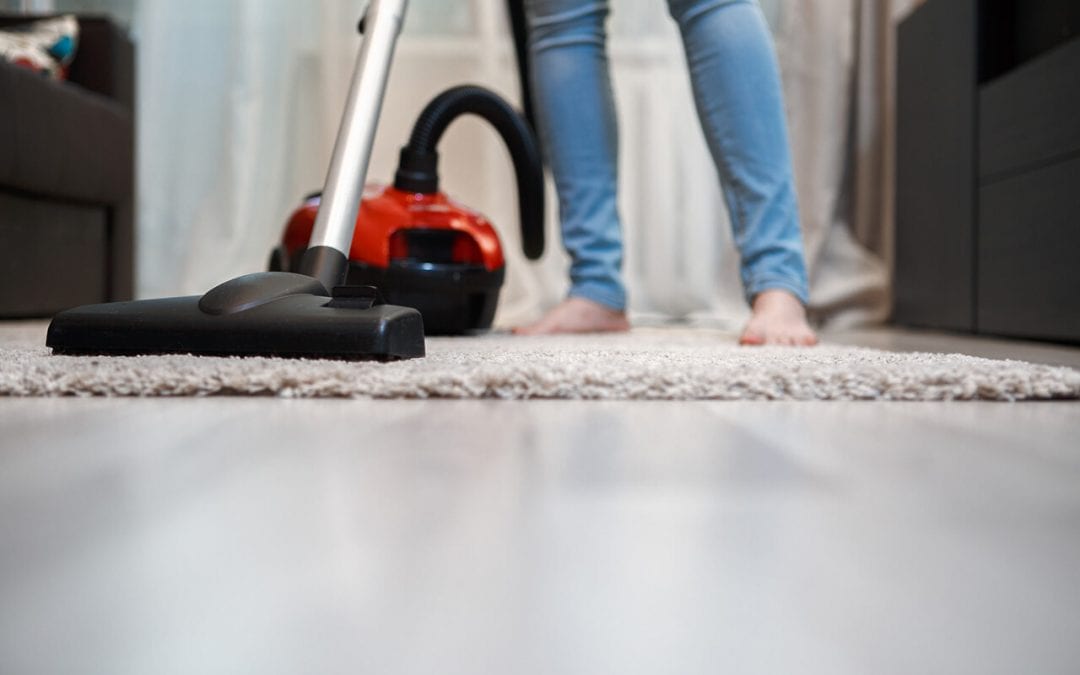Change the HVAC Filters to Improve Indoor Air Quality
A well-functioning HVAC system cycles air throughout your home and keeps the temperature regulated. It also works to trap harmful contaminants, so the air filters will become dirty and clogged over time. Change the HVAC filters every 30 to 90 days, or as recommended by the manufacturer.
Vacuum Carpets and Rugs
Any checklist for improving indoor air quality must include regular cleaning of rugs and carpets. Carpet fibers trap dust, dirt, pet dander, and other pollutants. Vacuum all rugs and carpeting twice each week and do a thorough cleaning every six months to remove embedded contaminants.
Take Off Your Shoes
Shoes track dirt, mold, pollen, and pesticides into a home. Make a rule that shoes are not allowed indoors. Install a shoe rack or cabinet where family members and guests can remove their shoes immediately upon entering the home.
Improving Indoor Air Quality: Change the Air Filters
Set a reminder in your phone to replace or clean the air filters in your clothes dryer, vacuum cleaner, air purifier, and kitchen vents. Refer to the manufacturer’s instructions to learn how often these filters should be cleaned or replaced.
Clean the Air Ducts
Your goal of improving indoor air quality should include air duct maintenance. The air ducts inside your HVAC system distribute hot and cold air throughout the home. If those ducts accumulate dander, dirt, dust, or mold, your home’s air quality suffers. Bring in a professional HVAC technician to clean the ductwork every few years.
Maintain Proper Humidity Levels
Maintain an indoor humidity level of between 35 and 55%. This is a good general rule to keep indoor allergens and pollutants under control. Dust mites and mold thrive with higher levels of moisture in the air. If you find it difficult to keep humidity under control during the hot summer months, use a dehumidifier machine.
Make Use of Ventilation Fans to Improve Indoor Air Quality
Kitchen activities produce a variety of indoor air pollutants. For example, carbon monoxide is released when using a gas stove. Electric burners also produce smoke and contaminants, although the levels are lower than gas burners. Use the range hood ventilation fan to help move these pollutants outside of the home.
Only Smoke Outside
Secondhand smoke is one of the most dangerous pollutants in indoor air. It can affect the health of everyone in the home, including pets. Dogs who live in households with cigarette smoke can experience eye irritation, allergies, and lung problems. If you or someone in your household smokes, move all smoking outdoors to reduce the health risks to other family members.
Don’t Purchase Aerosol Sprays
Aerosol sprays release dangerous chemicals into your home’s air. Aerosol products and their propellants have been linked to lung problems, asthma, and heart disease. Use non-aerosol alternatives for items like deodorants, air fresheners, hair sprays, and furniture polish.
Use Fragrance-Free Products to Improve Indoor Air Quality
Many cleaning products include chemicals that impact family members with allergies or asthma. Buy fragrance-free, natural versions of bathroom and kitchen cleaners and laundry soap. Baking soda, vinegar, and lemon are quality non-toxic alternatives you can use to clean your home.
JVC Home Inspection provides home inspections and related services to customers in Central Florida. Contact us to schedule an appointment.

